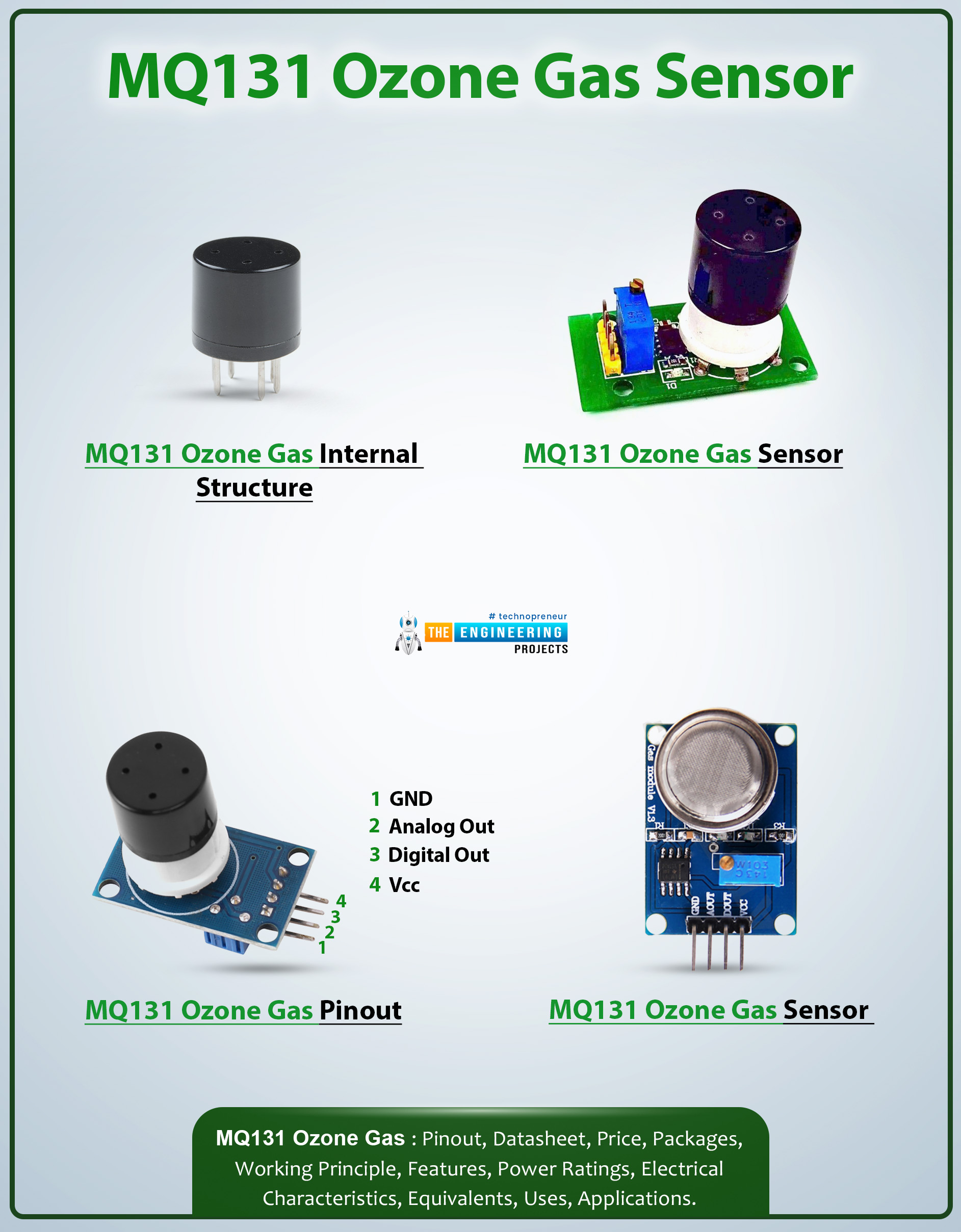
Hi peeps! Welcome to another tutorial where we are discussing the MQ sensor elements. Today, our focus is on the MQ131 ozone gas sensor. Ozone is a major component of air pollution and it leads to multiple health problems related to the respiratory system and other issues. It also has an adverse effect on the plants and agricultural lands. It is a pungent gas with a pale blue color and usually, it is present in very low concentrations in the normal air. The MQ131 ozone gas sensor is used in outdoor monitoring stations, industries that use ozone for experimentation, laboratories, and sensitive areas that have a high concentration of ozone gas in the environment.
In this article, we’ll study the MQ131 ozone gas sensor in detail. We’ll kick off the discussion with the introduction of this sensor. After that, we'll unveil the datasheet of this sensor where you will see the features and specifications of this product. After that, you will see the working principle and other details followed by an exploration of this product's dimensions and applications.
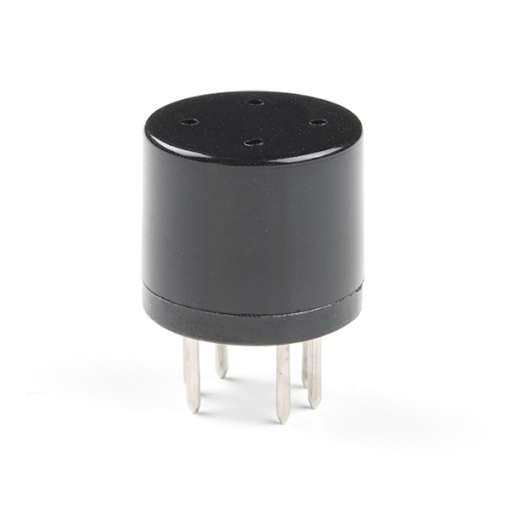
MQ131 Ozone Gas Sensor Introduction
The MQ131 is specially designed to detect the presence of ozone gas concentration. We know that Ozone is an allotrope of oxygen gas made with three atoms and is indicated as O3. The core component of this sensor is the tin dioxide that can react with the ozone gas therefore, with the specialized structure, it can detect the presence of this gas in the environment.
This sensor has a lower conductivity in fresh air whereas, a high conductivity when the ozone gas is present in the surrounding air. Let’s find out the basic components of this sensor:
MQ131 Ozone Gas Sensor Ceramic Tube
There is a small cylindrical shaped tube made of alumina (AL2O3) that forms the sensor base. It has excellent thermal stability and great electrical resistance. The role of this tube in the sensor is to perform two functions:
- It provides mechanical strength to the sensing element.
- It provides the insulating base for the other components of the perfect performance.
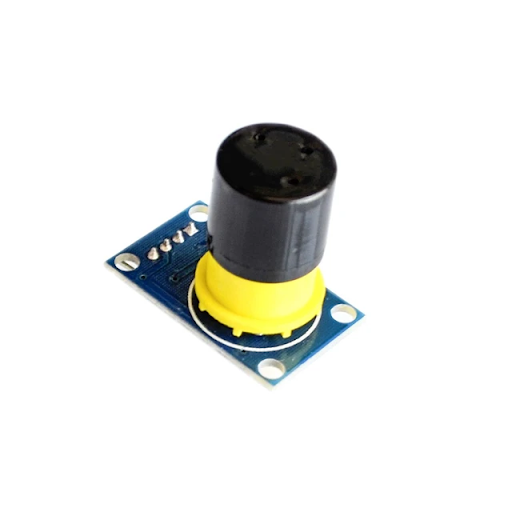
MQ131 Ozone Gas Sensor Sensing Layer
Unlike many other members of the MQ series that have tin oxide as the sensing element, the MQ131 ozone gas sensor has Tungsten Oxide (WO3). It is present in the form of a thin layer around the ceramic tube. This structure acts as the heart of the whole sensor because Tungsten Oxide (WO3) is a metal oxide therefore, its conductivity lies between the conductors and insulators. The MQ131 works on the chemiresistor principle that is defined as:
"The chemiresistor principle refers to the sensing mechanism of an element in which the electrical resistance of the element changes when it absorbs a particular gas or any other material."
This will be more clear when we’ll learn the working principle of this sensor.
MQ131 Ozone Gas Sensor Electrodes
There are measuring electrodes made of metals like gold (Au) that connect the sensing element with the ceramic tube. It creates a contact between these two and allows the current to pass through the sensing element. These are also responsible for allowing the circuit to measure the electrical resistance instantly.
MQ131 Ozone Gas Sensor Heater Circuit
A heater circuit is required to allow the tungsten oxide to absorb the gases. This circuit consists of a coil made of nichrome wire. This coil is embedded near the sensing layer and maintains the sensor temperature at 300°C. This temperature is crucial for the reaction between gases and the sensing element.
MQ131 Ozone Gas Sensor Housing
The whole structure mentioned before is placed and protected on a strong housing. It is enclosed in plastic or bakelite material that performs the following operations:
It provides a strong base to the circuit so that it may act as a complete device.
It allows the gases to pass over it and renders the other particles or substances so that the internal structure is not disturbed.
It provides the connection and completes the device so it may be used in different circuits.
Other MQ series members such as MQ-3, MQ-2, etc have a metallic mesh-like structure for the same purpose but in MQ131, most of the models have the plastic housing and only some of them have the metallic structure.
In addition to these, other elements are present in the basic structure such as the pins of the MQ131 ozone gas sensor and we’ll discuss these in detail in the datasheet.
MQ131 Ozone Gas Sensor Datasheet
A datasheet is considered an important repository for the devices such as the MQ131 ozone gas sensor and it is always advisable to learn the datasheet before utilising any device in the circuits. Here are the important pieces of information from the MQ131 sensor.
MQ131 Ozone Gas Sensor Features
The MQ131 is a highly sensitive device and provides the best sensitivity to the ozone gas O3 over a large range. As a result, it detects even a low concentration of the target gas.
It operates on very low power and, therefore, is a suitable device to be used in the Internet of Things (IoT) and other projects.
It is a cost-effective option for multiple types of projects.
It shows the analogue and digital output pins where the analogue pin shows the continuous change in the gas concentration and the digital pin shows a binary signal based on pre-set threshold values.
It has a compact size design that makes it suitable for almost all types of circuits.
MQ131 Ozone Gas Sensor Specifications
The following table outlines the key specifications of this high-performance ozone sensor:
Parameter |
Description |
Type |
Gas Sensor |
Model |
MQ131 |
Detection Gas |
Ozone (O3) |
Operating Voltage |
5 V DC |
Heater Voltage |
5 V ± 0.1 V |
Load Resistance |
Adjustable |
Heater Resistance |
31 Ω ± 3 Ω |
Heating Power |
<900 mW |
Sensitivity |
≥3.6 (Rₒ/R₀) in clean air |
Response Time |
≤10 seconds |
Recovery Time |
≤30 seconds |
Heating Resistance |
33 Ω ± 3 Ω |
Heating Current |
<180 mA |
Ambient Temperature |
-10°C to 50°C |
Humidity |
<95% RH |
Dimensions |
32 mm x 20 mm x 22 mm |
MQ131 Ozone Gas Sensor’s Sensitivity Curve
To measure the performance of MQ131, a comparison between its sensitivity curve in fresh air and the one in the presence of ozone gas is useful. Here is the graph that shows both these curves:

Here,
Ro= Resistance of MQ131 sensor in the clean air
Rs= Resistance of MQ131 sensor in the air with ozone gas
Ro/Rs= Ratio of the MQ131 sensor performance in polluted air to the clean air
MQ131 Ozone Gas Sensor’s Performance Factors
Just like other devices, the MQ131 does not perform ideally in all severe conditions. Factors like humidity and temperature affect the performance and the graph given below will explain the difference:
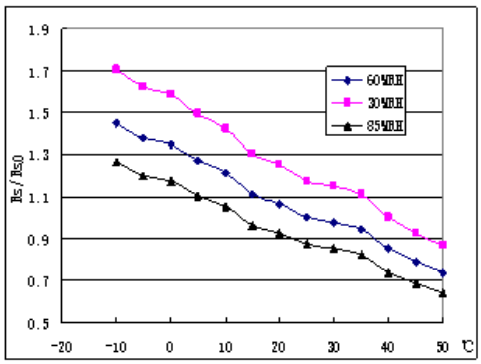
If you want to know more details about the datasheet then here is the link to visit:
MQ131 Ozone Gas Sensor Pinout Configuration
The MQ131 has four pins in most of its models and in some models, it has additional pins such as a heater and is not connected (NC). Here is the table that shows the description of each basic pin:
Pin Number |
Pin Name |
Description |
1 |
AO |
Analog Output |
2 |
DO |
Digital Output (optional) |
3 |
GND |
Ground |
4 |
VCC |
Power Supply (5V to 12V) |
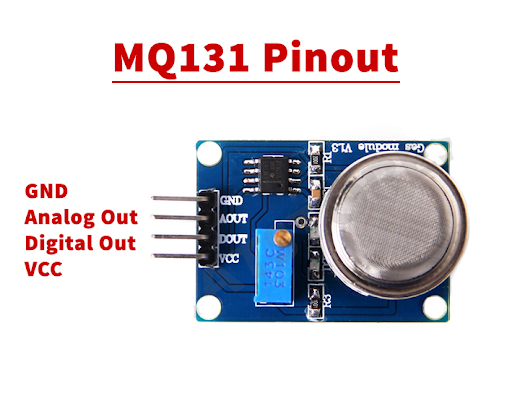
MQ131 Ozone Gas Sensor Packages
For the convenience of the user, the MQ131 sensor is present in the form of different packages. A small description of each package is given next:
Package Type |
Description |
Through-Hole |
It is the traditional pin configuration with individual wires for connecting to a circuit board. |
Surface Mount (SMT) |
It is a compact package with smaller pins soldered directly onto a PCB. it is easy to fix in the circuit. |
Pre-Assembled Module |
This package has the sensor integrated with additional components like resistors, capacitors, and voltage regulators on a small PCB. |
Sensor Array |
It is a specialized package that has multiple MQ-131 sensors combined on a single PCB, sometimes with additional components for individual sensor control and signal processing. |
MQ131 Ozone Gas Sensor Alternatives
Just like the MQ131, there are some other sensors that are created to detect the ozone gas concentration in the air. Some of these are:
Figaro TGS series gas sensors (e.g., TGS2600, TGS2602)
Winsen ZE08-O3 Ozone Gas Sensor Module
SPEC Sensors O3 Ozone Gas Sensor
Figaro TGS series gas sensors (e.g., TGS4161, TGS4161-E00)
Where to Buy MQ131 Ozone Gas Sensor
Always choose a trusted source to buy sensitive devices like MQ131. Here are the reliable options for you from where you can get different types of products and devices without any difficulty:
eBay
Amazon
AliExpress
MQ131 Ozone Gas Sensor Working Principle
The structure of this sensor is designed for uncomplicated working and effective results. Here are the steps that are involved in the working principle:
The heater circuit heats the sensing element at the temperature of 300C and maintains it.
The continuous heating stimulates the sensing element to absorb the gases at a high rate.
When the ozone gas is present around the sensor, the surface of the sensing element absorbs the ozone molecules.
The adsorption affects the electrical conductance of the sensing element. This change is sensed through the sensor.
The higher concentration of the ozone layer means a great change in the analogue values of the sensor that are indicated through the signals at the analogue pin.
If the threshold value is set for the sensor, then on a certain limit, the digital signal at the digital pin is shown.
These signals are sent to the output devices for further processing.
MQ131 Ozone Gas Sensor Logic Diagram
The MQ series features a straightforward design, and here is a diagram illustrating its internal structure:
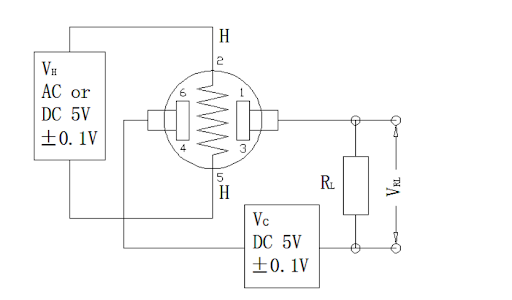
MQ131 Ozone Gas Sensor Physical Dimensions
The MQ131 is available in multiple packages and models but usually, the general dimensions are considered so I’ve created a table with the standard size and dimensions of the MQ131 ozone gas sensor:
Dimension |
Value |
Units |
Diameter |
18 |
mm |
Height (excluding pins) |
17 |
mm |
Pin height |
6 |
mm |
Total height (including pins) |
23 |
mm |
Approximate pin spacing |
2.5 |
mm |
Weight |
5 |
grams |
MQ131 Ozone Gas Sensor Applications
Ozone is not extensively present gas or is not used as a fuel therefore, it is not present in the common areas just like methane, butane, and other such gases. But, it has different kinds of applications that are used in the specialized departments. Here are some domains where the MQ131 ozone gas sensor is widely used:
Domestic Ozone Air Purifiers:
It monitors ozone levels produced by air purifiers.
Industrial Ozone Monitoring
It tracks racks of ozone levels in various industrial processes here.
Portable Ozone Detectors
It is used by personnel working in environments with potential ozone risks.
Air Quality Monitoring
It detects ozone levels in ambient air.
Environmental Monitoring
It monitors ozone levels in specific locations.
Educational Experiments
It is used in educational settings to learn about gas sensing principles.
DIY Projects
It is used in various DIY projects requiring basic ozone detection.
Home Automation Systems
It integrates with smart home systems for automated ozone monitoring and control.
Hence in this way, we have understood the basic and fundamental concepts of the MQ131 ozone gas sensor. We commenced with the introduction of this gas sensor and then we saw some points of the datasheet such as the features, specifications, and some graphs. After that, we saw the working principle of this sensor and moved forward with the physical dimensions and application of this sensor. I hope all the things are clear to you but if you want to know more about this sensor then you can ask in the comment section.



